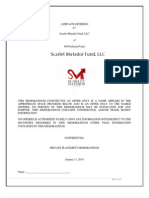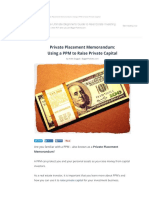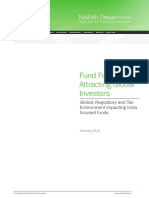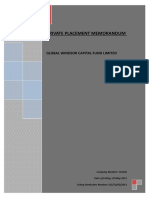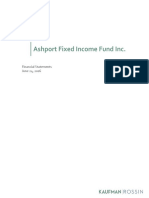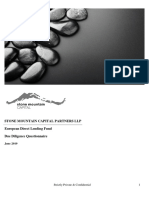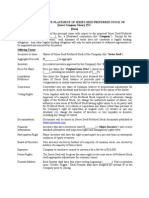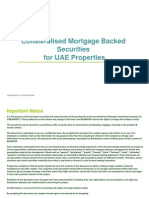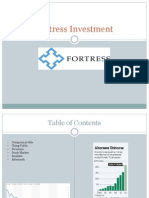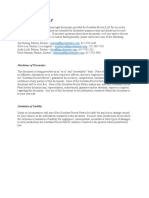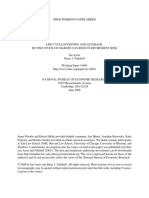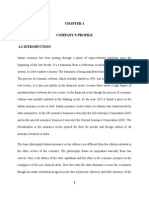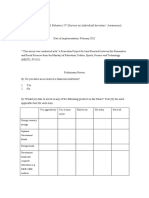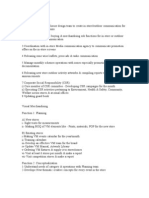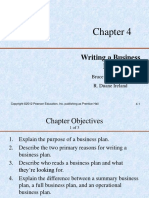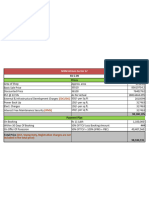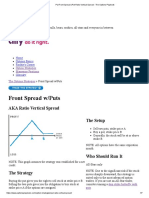Introduction to Fund Formation
David A. Sussman
August 2014
©2014 Duane Morris LLP. All Rights Reserved. Duane Morris is a registered service mark of Duane Morris LLP.
Duane Morris – Firm and Affiliate Offices | New York | London | Singapore | Philadelphia | Chicago | Washington, D.C. | San Francisco | Silicon Valley | San Diego | Boston | Houston | Los Angeles | Hanoi | Ho Chi Minh City |
Atlanta | Baltimore | Wilmington | Miami | Boca Raton | Pittsburgh | Newark | Las Vegas | Cherry Hill | Lake Tahoe | Myanmar | Oman | Mexico City | Duane Morris LLP – A Delaware limited liability partnership
www.duanemorris.com
�Agenda
• Types of funds
• Structural issues
• Key documents
• Regulatory issues
1 www.duanemorris.com
�Types of Funds
• Hedge Funds
– Typically invest in liquid, publicly-traded securities
– Investors make capital contributions upon
subscription
– Usually feature a one year lock-up, after which
investors may withdraw from the Fund
– Allocates profits and losses based on realized and
unrealized gains
2 www.duanemorris.com
�Types of Funds
• Private Equity Funds
– Make long-term, illiquid investments
– Investors make “capital commitments” upon
subscription
– Fund manager makes “capital calls” from the
investors’ commitments
– Allocates profits and losses based on realized
gains
3 www.duanemorris.com
�Types of Funds – Fee Structures
• Hedge Funds:
– Manager typically collects an annual management
fee:
Set fee as an annual rate as a percentage of the
total amount of the net asset value of the
investments owned by the Fund (the “AUM Fee”)
– Manager also collects an Incentive Allocation:
Percentage of the Fund’s net realized and
unrealized profits
4 www.duanemorris.com
�Types of Funds – Fee Structures
• Private Equity Funds
– Manager receives an annual Management Fee
Early Investment Period: percentage of the Fund’s
total capital commitments
Post-Investment Period: percentage of the Fund’s
invested capital
– Manager also receives a Carried Interest
Percentage of the Fund’s realized profits
5 www.duanemorris.com
�Structure
• Formed as a limited partnership
– Fund investors are the Limited Partners
• Sponsor forms one or two separate limited
liability companies
• Three-party structure vs. two-party structure
6 www.duanemorris.com
�The Limited Partnership
• General Partner
– Often a limited liability company (”GP Entity”)
– Responsible for overall Fund management
• Limited Partners
– Passive investors
– Limited liability
– Partnership interests are considered “securities”
• Flow-through tax treatment
• Flexibility in management
– Broad authority for GP Entity
7 www.duanemorris.com
� Three-Party Structure
General Partner Management Company
(Limited Liability Company) (Limited Liability Company)
Invests in/administers Manages investments
Fund for Fund
FUND
(Limited Partnership)
Invest
in Fund
Investor Investor Investor
(LP) (LP) (LP)
8
www.duanemorris.com
�Three Party Structure
• GP Entity receives Incentive Allocation/Carried
Interest
• Management Company of a Private Equity
Fund:
– Receives the Management Fee
• Management Company of a Hedge Fund:
– Receives the AUM Fee
9 www.duanemorris.com
� Two-Party Structure
General Partner
(Limited Liability Company)
Invests in, administers
and manages
investments for Fund
FUND
(Limited Partnership)
Invest
in Fund
Investor Investor Investor
(LP) (LP) (LP)
10
www.duanemorris.com
�Two-Party Structure
• Hedge Fund:
– GP Entity collects Incentive Allocation and AUM
Fee
• Private Equity Fund:
– GP Entity collects Incentive Allocation and
Management Fee
11 www.duanemorris.com
�Key Documents
• Private Placement Memorandum
• Limited Partnership Agreement
• Subscription Booklet
• GP Entity LLC Agreement
• Management Company LLC Agreement
• Investment Management Agreement
12 www.duanemorris.com
�Private Placement Memorandum (“PPM”) –
Sets forth key information about the Fund
• Investment strategy
• Risk factors
• Information about GP Entity and Management Company
• Management Fee/AUM Fee/Incentive Allocation/Carried
Interest
• Other fees/expenses
• Conflicts of Interest
• Tax matters
• Synopsis of Limited Partnership Agreement
13 www.duanemorris.com
�Limited Partnership Agreement –
Parties: GP Entity and Limited Partners
• Features:
– Term
– Object/purpose
– Limitation of liability
– Management
– Indemnification
– Fees
– Fund expenses
– Tax matters
– Valuation of Assets
– Assignment and transfer
14 www.duanemorris.com
�Limited Partnership Agreement –
Parties: GP Entity and Limited Partners
– Hedge Funds:
Capital accounts
Allocations
Distributions
– Private Equity Funds:
Capital contributions
Capital commitments
Capital calls
Distributions
Defaulting Limited Partners
– Hedge Funds: admission/withdraw provisions
– “Key Man” provisions
– GP Entity removal
– Books & records/Periodic reporting
15 www.duanemorris.com
�Subscription Documents –
Confirm Investor’s obligation to purchase fund interests - Provides
important information about an Investor
• Importance of Subscription Documents
– Exemptions
– Duty to update
• Investor Information
– Identifying information
– Amount of commitment
16 www.duanemorris.com
�Subscription Documents –
Confirm Investor’s obligation to purchase fund interests - Provides
important information about an Investor
– Representations and warranties
Type of investor (individual or entity); Net worth
NASD New Issues Rule
Acknowledgements (receipt of documents, questions
answered, etc.)
Accredited investor, qualified purchaser and/or qualified
eligible person status
Acknowledgement of unregistered/restricted status of Fund
Indemnification provisions
– Investors that are private funds or “benefit plan
investors” – 1940 act and ERISA exemptions
– Confidentiality
17 www.duanemorris.com
�Regulatory Issues
• Securities Act of 1933
• Investment Advisers Act of 1940
• Investment Company Act of 1940
• Securities Exchange Act of 1934
18 www.duanemorris.com
�Registration of Offer and Sale of Fund
Securities Under the 1933 Act
• Interests in a Fund are “securities” under 1933
Act
• Exemptions
– Section 4(2) of the 1933 Act
Private placement exemption
– Regulation D
Safe harbor that qualifies offerings for exemption
under Section 4(2)
Reduces uncertainty and specifies objective criteria
19 www.duanemorris.com
�Regulation D
Accredited Investors
• Rule 506 is most relevant for Funds
• Exemptions for offerings made exclusively to “accredited investors”
• Accredited Investor Criteria Generally:
– Natural person with net worth in excess of $1 million. The “net worth” test: (i)
excludes the value of the investor’s primary residence; and (ii) provided that such
indebtedness was incurred prior to 60 days before the investor’s investment into
the fund, excludes the amount of liabilities secured by the investor’s primary
residence unless and to the extent that such liabilities exceed the value of the
investor’s primary residence.
– Natural person with an annual income of:
Individually: $200,000; Jointly: $300,000
– Trust with assets in excess of $5,000,000
– Any entity beneficially owned exclusively by accredited investors
20 www.duanemorris.com
�Regulation D
General solicitation or advertising
• Prior to the enactment of the Jumpstart Our Business Startups Act (the “Jobs Act”), general
solicitation was prohibited in connection with Regulation D offerings.
• The Jobs Act amended the general solicitation rules and, in July, 2013, the SEC issued final rules
allowing for the general solicitation in Regulation D offerings provided that the investors are all
accredited investors and the issuer takes reasonable steps to verify each of the investor’s accredited
investor status.
• Whether the issuer has taken “reasonable steps” to verify accredited investor status is a facts and
circumstances analysis. However, the SEC has issued a non-exclusive and non-mandatory list of
ways in which issuers will be deemed to satisfy the verification requirement as long as the issuer
does not have knowledge that the investor is not an accredited investor. The list includes the
following: (i) review of the investor’s tax return for 2 years and also receive a written statement that
the investor expects to reach the income necessary to qualify, (ii) review 3 months’ worth of financial
statements and also receive a representation that the investor has disclosed all liabilities necessary
to make a net worth determination, (iii) the issuer may receive 3rd party verification from a registered
broker-dealer, a registered investment advisor, a licensed attorney, or a licensed accountant; and (iv)
the issuer may receive written certification from an existing investor that such investor still qualifies
as an accredited investor.
• Based upon these rules and verification requirements, most funds are well advised NOT to
engage in general solicitation.
21 www.duanemorris.com
�Regulation D –
Other considerations
• Investors must not invest with a view to
distribute interests to the public
• Form D filing
• Exemption from State Registration/Blue Sky
Laws
– National Securities Markets
Improvement Act of 1996
– Notice filings
22 www.duanemorris.com
�Advisers Act
Small Adviser Exemption Before Dodd-Frank Act
• Prior to the enactment of the Dodd-Frank Wall Street Reform and Consumer Protection
Act in 2010 (the “Dodd-Frank Act”), the GP Entity and/or Management Company:
Was required to register with the SEC if it had $30 million or more of “assets
under management”
Was allowed to register with the SEC if it had at least $25 million or more of
“assets under management”
Small Adviser Exemption: However, small advisers were not required to
register with the SEC even if they had $30 million or more of assets under
management. “Small Advisers” were investment advisers that: (i) had fewer
than 15 clients in preceding 12 months, (ii) did not advise registered
investment companies or business development companies, and (iii) did not
“hold itself out to the public” as an investment adviser. The Management
Company typically satisfied this exemption because the Fund qualified as a
single client.
23 www.duanemorris.com
�Advisers Act
Registration Requirements Post-Dodd-Frank Act
• New Thresholds for SEC Registration: The Dodd-Frank Act significantly changed the landscape for investment
advisers. Generally, investment advisers are subject to the new threshold amounts for registration: (i) investment
advisers with less than $25 million of assets under management (“small advisers”) are generally prohibited from
registering with the SEC and must register with the state regulators unless an exemption applies, (ii) investment
advisers with $25 million to $110 million of assets under management (“mid-sized advisers”) are generally prohibited
from registering with the SEC and must register with the state regulators unless an exemption applies but there is a
buffer for advisers between $100 million and $110 million, and (iii) advisers with $110 million are required to register
with the SEC.
• Exemptions from Registration with the SEC:
Advisers only to Venture Capital Funds
Advisers only to Private Funds with less than $150 million in assets under management
Advisers that are Foreign Private Advisers
Advisers only to Small Business Investment Companies (“SBICs”)
Advisers only to Family Offices
Intrastate Advisers
• Obligations of Investment Advisers that are Exempt from Registering with the SEC: Notwithstanding that an
investment adviser may not be required to register with the SEC, such advisers may be subject to certain SEC rules,
relating to: (i) the anti-fraud provisions, (ii) the pay-to-play rules, (iii) certain supervisory requirements, and (iv)
principal transactions rules. Further, investment advisers relying on the Venture Capital Funds or Private Fund’s
exemptions from registration, such advisers will be considered “Exempt Reporting Advisers” and required to a subset
of the Advisers Act rules, including, submitting a truncated version of the Form ADV and be subject to SEC
examinations.
24 www.duanemorris.com
�Advisers Act
Compliance Requirements for SEC Registered Investment Advisers
• Investment advisers that are registered with the SEC, generally, will become subject to
the full scope of the Advisers Act. These include:
Filing current disclosures on Form ADV
Satisfying certain record-keeping requirements
Being subject to SEC Office of Compliance examinations
Establishing, maintaining, and implementing compliance programs (including
written policies and procedures reasonably designed to prevent violations of
the Advisers Act or other securities laws, proxy voting policy, insider trading
policy, and code of ethics, designating a Chief Compliance Officer tasked for
administrating the firm’s policies and procedures, performing periodic training
on policies and procedures, and performing compliance reviews at least
annually)
Satisfying the SEC’s Custody Requirements
Complying with advertising rules
Remaining subject to restrictions on performance fees
25 www.duanemorris.com
�Investment Company Act
• Most Common Exemptions:
– Section 3(c)(1) Funds
Not making or proposing to make a public offering
Beneficial ownership is limited to fewer than
100 persons
– Section 3(c)(7) Funds
Not making or proposing to make a public offering
All owners must be “qualified purchasers”
26 www.duanemorris.com
�Investment Company Act – 3(c)(1) Funds
• 100 Beneficial Owner Limit
– Natural persons:
Individuals
Spouses holding interests jointly
Involuntary transfers do not increase the number of
beneficial owners
– Entities:
Companies that own 10% or more of the Fund
Look-through to beneficial owners
Only applies to other Funds and Investment Companies
27 www.duanemorris.com
�Investment Company Act – 3(c)(1) Funds
• Prohibition Against Public Offerings
– Generally satisfied by complying with
Regulation D prohibitions
28 www.duanemorris.com
�Investment Company Act – 3(c)(7) Funds
• Exclusive ownership by “Qualified Purchasers”
– Natural persons who own not less than $5 million in
investments
– Family companies that own not less than $5 million in
investments
– Trusts with a trustee and settlor who are qualified
purchasers
– Institutional buyers that own and invest on a
discretionary basis not less than $25 million in
investments
– Companies in which each beneficial owner of the
company’s securities is a qualified purchaser
29 www.duanemorris.com
�Investment Company Act – 3(c)(7) Funds
• Prohibition Against Public Offerings
– Generally satisfied by complying with
Regulation D prohibitions
30 www.duanemorris.com
�Exchange Act
• Broker-Dealer Registration
– Broker: any person engaged in the business of
effecting transactions for the account of others
Funds are not brokers because any trading activity is
done for their own account
– Dealer: any person engaged in the business of buying
or selling securities for such person’s own account
through a broker or otherwise
Funds are not dealers because they are not considered
to be “in the business” of buying and selling securities
– Funds are considered to be “traders” that buy and sell
for investments generally
31 www.duanemorris.com
�Exchange Act
• Section 12 of the Exchange Act
Prior to the enactment of the Jobs Act, Section 12(g)
required issuers to register a class of equity securities with
the SEC if, on the last day of the issuer’s fiscal year, such
class of securities was held of record by 500 or more record
holders and the issuer had total assets of more than $10
million.
Title V of the Jobs Act amended Section 12(g) of the
Exchange Act which now provides that an issuer will
become subject to the Exchange Act requirements within
120 days after the last day of its fiscal year on which the
issuer has total assets in excess of $10 million and a class
of equity securities (other than exempted securities) held of
record by either: (i) 2,000 persons, or (ii) 500 person who
are not accredited investors.
32 www.duanemorris.com
�Further information
David Sussman, Partner, Newark, NJ
dasussman@duanemorris.com
+1 (973) 424-2011
33 www.duanemorris.com
� Introduction to Fund Formation
David Sussman
August 2014
©2014 Duane Morris LLP. All Rights Reserved. Duane Morris is a registered service mark of Duane Morris LLP.
Duane Morris – Firm and Affiliate Offices | New York | London | Singapore | Philadelphia | Chicago | Washington, D.C. | San Francisco | Silicon Valley | San Diego | Boston | Houston | Los Angeles | Hanoi | Ho Chi Minh City |
Atlanta | Baltimore | Wilmington | Miami | Boca Raton | Pittsburgh | Newark | Las Vegas | Cherry Hill | Lake Tahoe | Myanmar | Oman | Mexico City | Duane Morris LLP – A Delaware limited liability partnership
www.duanemorris.com





